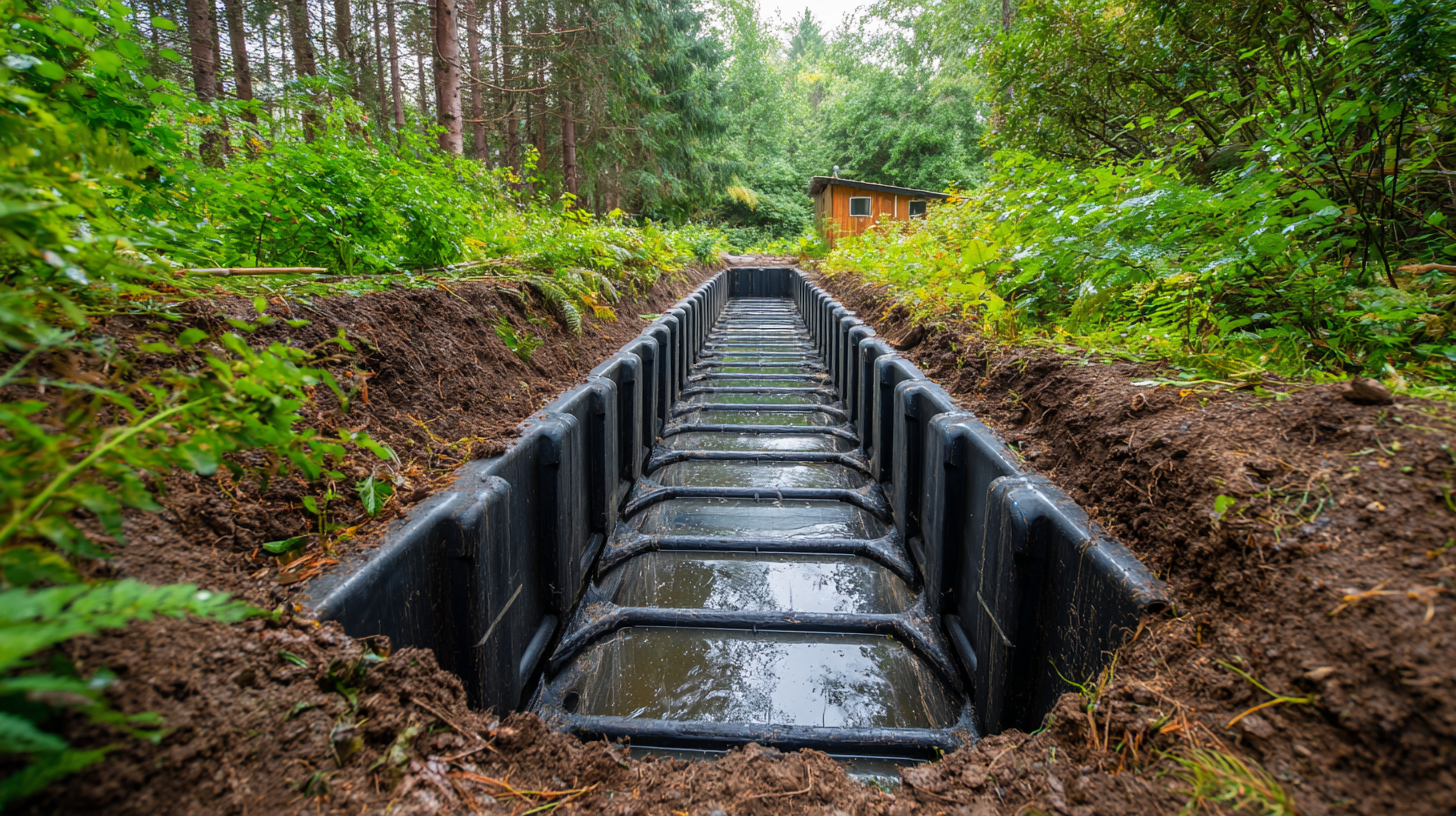Understanding the Benefits of Using a Poly Septic Tank for Sustainable Waste Management
In today's world, sustainable waste management is becoming increasingly important for homeowners and environmental enthusiasts alike. One innovative solution gaining popularity is the poly septic tank, known for its durability, efficiency, and eco-friendliness. Unlike traditional concrete or steel septic systems, poly septic tanks are made from high-density polyethylene, making them resistant to rust, corrosion, and cracking. This not only extends their lifespan but also reduces the need for frequent maintenance and replacements. By choosing a poly septic tank, homeowners can significantly minimize their ecological footprint while ensuring effective waste management. In this article, we will explore the various benefits of using a poly septic tank, including cost-effectiveness, ease of installation, and their capacity to support sustainable living practices. Let's uncover how adopting this advanced technology can lead to a cleaner environment and a more sustainable future.

Advantages of Poly Septic Tanks Over Traditional Systems
When it comes to sustainable waste management, poly septic tanks offer significant advantages over traditional systems. One major benefit is their durability; poly tanks are resistant to corrosion and can withstand harsh environmental conditions, reducing the likelihood of leaks or failures commonly associated with concrete or metal septic tanks. Additionally, poly septic tanks are lighter, making them easier to transport and install, thus lowering labor costs.
Tips for homeowners considering poly septic tanks include ensuring that the system is appropriately sized for your household needs, as a well-sized tank enhances efficiency and longevity. It's also vital to regularly maintain the tank by checking for any signs of wear or damage and scheduling routine inspections. This proactive approach not only extends the life of your septic system but also ensures optimal functioning, which is crucial for effective waste management.
Furthermore, poly septic tanks offer better flexibility in installation. They can adapt to various landscapes and soil types, making them an excellent choice for properties with challenging topographies. When choosing a tank, consider the local regulations and select a model that complies with environmental standards to maximize sustainability efforts.
Understanding the Benefits of Using a Poly Septic Tank for Sustainable Waste Management
| Features | Poly Septic Tanks | Traditional Septic Systems |
|---|---|---|
| Durability | High resistance to corrosion and impact | Susceptible to rust and degradation |
| Installation | Lighter and easier to install | Heavier and requires more labor |
| Maintenance | Minimal maintenance required | Regular maintenance needed to prevent blockages |
| Eco-Friendliness | Often made from recyclable materials | Less environmentally friendly components |
| Cost Efficiency | Lower initial and long-term costs | Higher costs over time due to repairs and replacements |
| Capacity | Available in various sizes for different needs | Limited size options |
Cost-Effectiveness of Poly Septic Tanks in Long-Term Waste Management
Poly septic tanks have emerged as a cost-effective solution for long-term waste management, particularly for households in rural areas where traditional sewage systems may not be available. According to a report by the National Environmental Services Center, the installation of poly septic tanks can reduce initial setup costs by approximately 20-30% compared to concrete alternatives. This is largely due to the lighter weight and easier handling of poly materials, which also lowers transportation and labor costs during installation.
Moreover, the durability of poly septic tanks leads to significant savings over time. A study from the Environmental Protection Agency indicates that poly tanks can last up to 50 years with proper maintenance, whereas concrete tanks often have a lifespan of only 30 years. This extended longevity mitigates the need for costly replacements and repairs, translating into lower overall expenses for homeowners. Additionally, the efficient waste treatment capabilities of poly septic tanks contribute to less frequent pumping requirements, further enhancing their cost-effectiveness in long-term waste management strategies.

Durability and Longevity: Why Poly Tanks Outperform Other Materials
Poly septic tanks have become a preferred choice for sustainable waste management due to their impressive durability and longevity. Unlike traditional materials such as concrete or steel, poly tanks are constructed from high-density polyethylene, a material known for its resistance to corrosion and cracking. This characteristic significantly reduces the risk of tank failure over time, making poly tanks a more reliable choice for homeowners seeking long-term solutions for waste disposal.

Moreover, the lightweight nature of poly septic tanks facilitates easier installation and transport, reducing labor costs and time during setup. Their robust design allows them to withstand harsh environmental conditions without succumbing to wear and tear. As a result, users benefit from a longer lifespan and less frequent need for replacements or repairs, ultimately leading to lower maintenance costs. In comparison to conventional septic systems, poly tanks stand out as a superior option, offering both resilience and efficiency in waste management practices.
Environmental Impact: How Poly Septic Tanks Promote Sustainability
Poly septic tanks offer a sustainable solution for waste management that aligns well with contemporary environmental goals. These tanks, made from high-density polyethylene (HDPE), are not only lightweight and durable, but they also help reduce the environmental footprint associated with traditional concrete septic systems. A study by the U.S. Environmental Protection Agency (EPA) highlights that properly designed and maintained poly septic tanks can minimize groundwater contamination, reducing the leaching of harmful contaminants into surrounding soils and waterways.
Moreover, poly septic tanks contribute to sustainability through their lifecycle benefits. According to a report from the National Association of Wastewater Technicians, these tanks have a significantly longer lifespan, often exceeding 30 years, compared to traditional systems that may only last 20 years. This longevity reduces the frequency of replacements, thereby lessening the need for resource-intensive manufacturing and transportation. Additionally, the lightweight nature of poly tanks allows for easier installation, which not only lowers labor costs but also decreases the carbon emissions associated with heavy machinery use during installation. By opting for poly septic tanks, homeowners and businesses can actively support sustainable waste management practices while also protecting local ecosystems.
Ease of Installation and Maintenance for Poly Septic Tanks
Poly septic tanks are gaining popularity for their ease of installation and maintenance, making them a practical choice for sustainable waste management. Unlike traditional concrete or fiberglass tanks, poly tanks are lightweight and easy to maneuver, allowing for faster installation processes. Homeowners and contractors can often complete the setup without the need for heavy machinery, significantly reducing labor costs and time.
In addition to their straightforward installation, poly septic tanks also offer low maintenance requirements. They are resistant to corrosion and cracking, ensuring a longer lifespan compared to other materials. This durability minimizes the need for frequent repairs or replacements, making it easier for homeowners to manage their waste systems efficiently. With less maintenance involved, property owners can conserve both time and resources, aligning with sustainable living principles while ensuring reliable performance.
Understanding the Benefits of Using a Poly Septic Tank for Sustainable Waste Management
This chart illustrates the key benefits of using poly septic tanks for sustainable waste management, showcasing factors such as ease of installation, maintenance frequency, durability, environmental impact, and cost-effectiveness. Each category is rated on a scale of 0 to 100, highlighting the advantages of opting for poly septic tanks over traditional systems.
